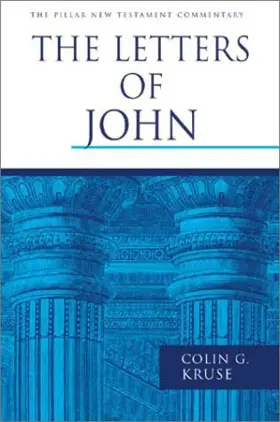

The Letters of John
in Pillar New Testament Commentary
Pages
255
Publisher
Eerdmans
Published
2000
ISBN-13
9780802837288
Collections
This book appears in the following featured collections.
- John Piper's NT Commentary Recommendations by John Piper (Desiring God)
- Recommended NT Commentaries by Denver Seminary Journal
- D. A. Carson's Commentary "Best Buys" by D. A. Carson
- Ultimate Commentary Collection: NT Expositional by John Glynn
- Building an NT Commentary Library by Invitation to Biblical Interpretation (Kostenberger & Patterson)
Reviews
The consensus pick from the experts is Kruse’s contribution to the PNTC. While not a entry-level commentary, neither does it require extensive knowledge of Greek. Keith Mathison says, “The Pillar New Testament Commentaries edited by D.A. Carson are consistently excellent works. Colin Kruse’s commentary is no exception. He has done extensive work in the Johannine literature and written a commentary on the Gospel of John for the Tyndale series. This work on the Epistles of John is thorough and accessible. It should be on the desk of every pastor and teacher.”
[Full Review]
This and Stott are great for the Johannine epistles.
Cruse beings his commentary by suggesting a plausible scenario for the production of these letters. Assuming the Letters and the Gospel of John were produced by the apostle John (“the fairest way to read the evidence,” 14), Kruse argues that the letters were written after a first form of the Gospel was written in response to a successionist group which differed from John on the nature of Jesus. This group appears to have been aggressive in that they sought to bring others into their circle. First John is a circular letter to all of the congregations in and around Ephesus, 2 and 3 John are to specific house churches advising them directly what to do with traveling teachers “peddling their new and heretical teaching” (3). After the letters were written, John died, and the final form of the gospel as we have it today was published. What happened to the successionists is unknown, but they may develop into Gnosticism. The body of the commentary is based on the English text, with Greek details in the footnotes. The style is very readable, with occasional excursuses. For example, Kruse briefly comments on the use of chrisma in 1 John 2:20; in another place he has a useful summary of the New Testament teaching on antichrist.
[Full Review]
The Pillar New Testament Commentaries edited by D.A. Carson are consistently excellent works. Colin Kruse's commentary is no exception. He has done extensive work in the Johannine literature and written a commentary on the Gospel of John for the Tyndale series. This work on the Epistles of John is thorough and accessible. It should be on the desk of every pastor and teacher
[Full Review]
This recent addition to the Pillar New Testament Commentary series is consistent with that series in that it is scholarly but not overly technical, while engaging questions of the relevance of the New Testament texts for contemporary readers. In an introductory chapter, Kruse constructs a "working hypothesis" for the historical origins of the Johannine letters, which he understands to be closely linked to the Fourth Gospel. Kruse's position is that an early form of the latter text was produced by the Beloved Disciple, who was an eyewitness to most of the events described in the story. Thus the Gospel of John is primarily about the conflict between Jesus and some of his Jewish contemporaries. At "a secondary level, the way the story of Jesus is written may reflect something of the experience of the Christian community of which the Beloved Disciple was a member when he wrote his Gospel" (2). After this early version of the Gospel was completed, great division arose within the community, centered primarily upon the person and work of Christ, and the Johannine letters addressed this schism in different ways. Either during the writing of these letters, or directly thereafter, the Beloved Disciple died, and members of the community revised the Fourth Gospel into its present form. The "working hypothesis" also includes the notion that because of the similarities in language, style, and content between 1 John and 2 John, and between 2 John and 3 John, respectively, these three letters were all quite possibly (Kruse is not definite on this issue) written by the same person, the "elder.
[Full Review]









